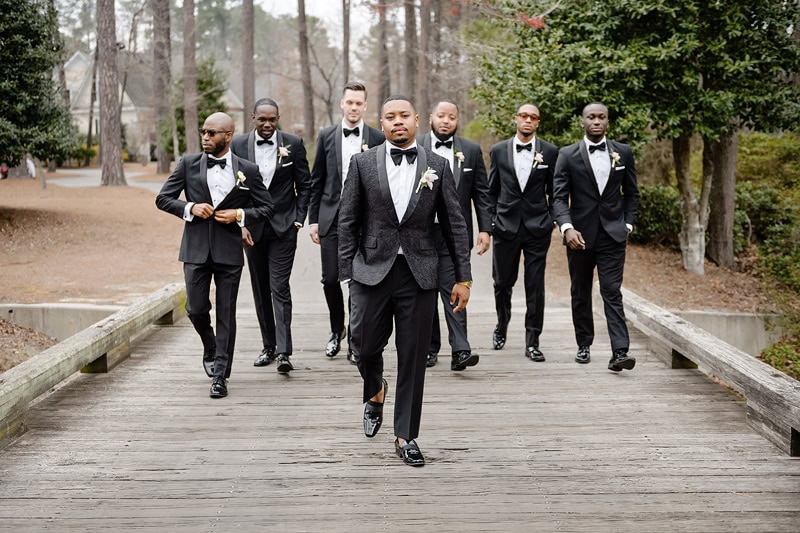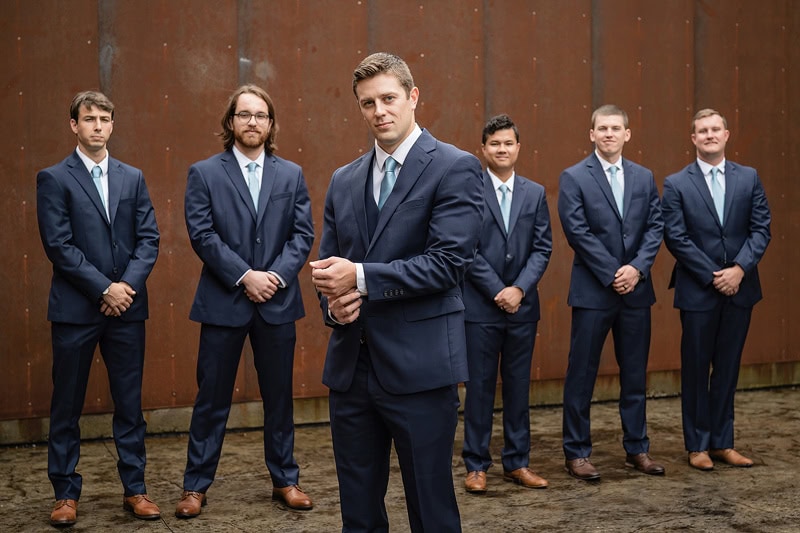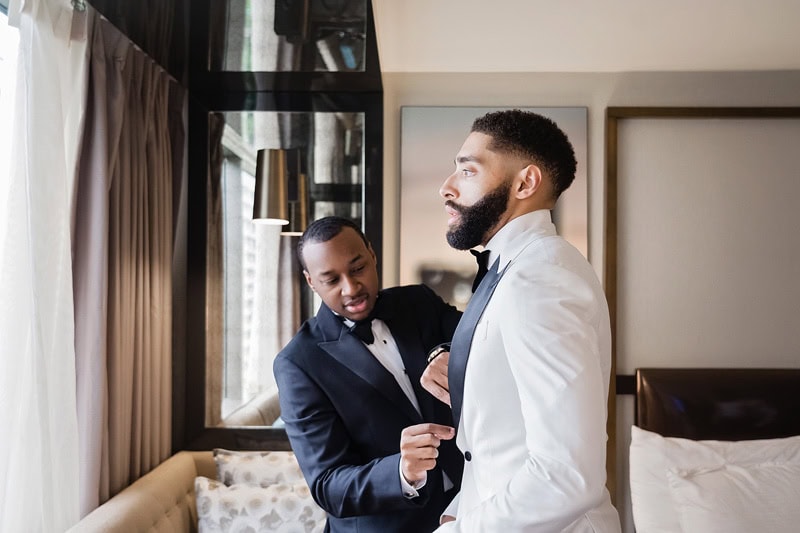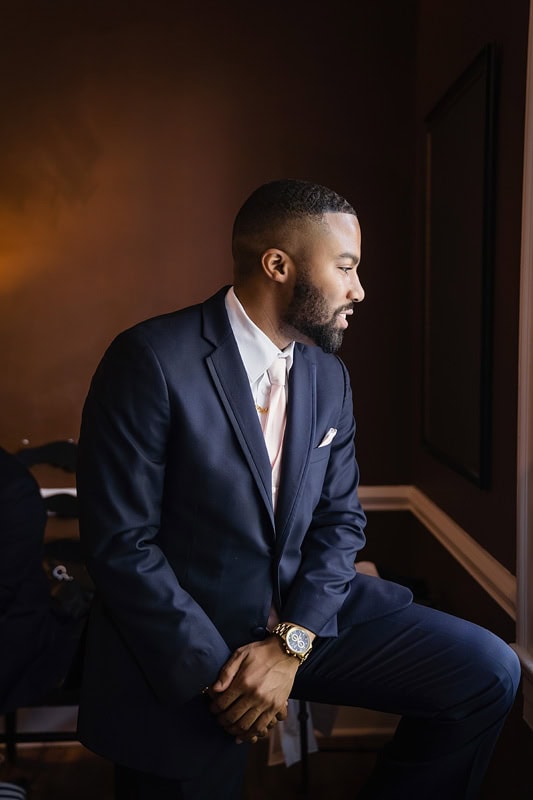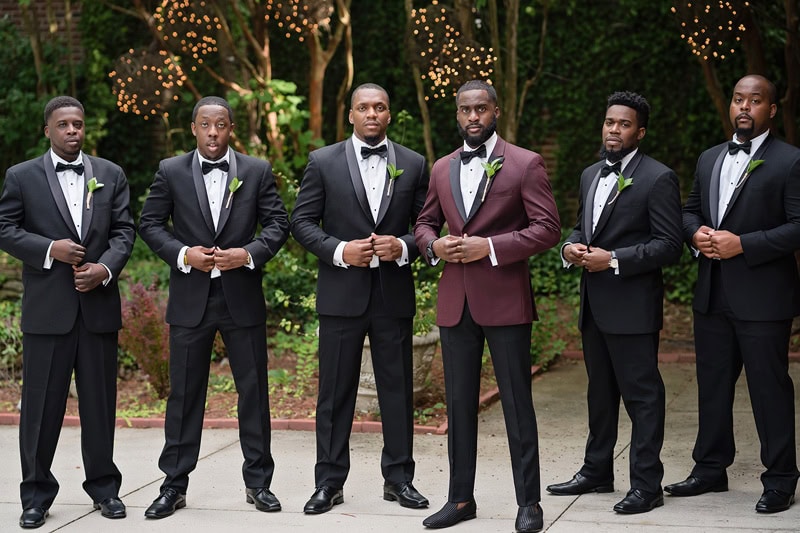Proper suit buttoning is an essential aspect of men’s fashion that often goes overlooked. The way you button your suit can greatly impact your overall appearance and level of sophistication. Whether you’re attending a formal event or heading to the office, understanding the rules and techniques of suit buttoning can help you achieve a polished and confident look. In this article, we will explore the anatomy of a suit jacket, compare single-breasted and double-breasted suits, discuss the rules for buttoning each type of suit, and provide tips for accessorizing your suit with ties and pocket squares.
Understanding the Anatomy of a Suit Jacket
Before we delve into the intricacies of suit buttoning, it’s important to understand the different parts of a suit jacket. A suit jacket typically consists of several components, including the lapel, collar, shoulder, sleeve, cuff, pocket, and vents. The lapel is the folded flap of fabric on the front of the jacket that extends from the collar to the buttonhole. The collar is the part that wraps around the neck and rests against the back of the neck. The shoulder refers to the area where the sleeve meets the body of the jacket. The sleeve is the part that covers the arm and ends in a cuff. The pocket is where you can store small items such as a handkerchief or business cards. Finally, vents are slits in the back of the jacket that allow for ease of movement.
Single-Breasted vs. Double-Breasted: Which is Right for You?
When it comes to choosing between a single-breasted and double-breasted suit, there are several factors to consider. Single-breasted suits are more versatile and can be worn for both formal and casual occasions. They typically have one row of buttons down the front and are considered more traditional. On the other hand, double-breasted suits have two rows of buttons and are often associated with a more formal and sophisticated look. They are ideal for special occasions and can make a bold fashion statement. Ultimately, the choice between single-breasted and double-breasted suits depends on your personal style, the occasion, and your body type.
The Rules of Buttoning a Single-Breasted Suit
| Rule 1 | Always leave the bottom button undone. |
| Rule 2 | Button the top button when standing. |
| Rule 3 | Unbutton the suit jacket when sitting down. |
| Rule 4 | Button the middle button (if there is one) or leave it undone. |
| Rule 5 | Always button the suit jacket when standing, unless you are wearing a waistcoat. |
When it comes to buttoning a single-breasted suit, there are some traditional rules to follow. The general rule is to always leave the bottom button unbuttoned. This is because the bottom button is traditionally left undone to allow for ease of movement and to prevent the jacket from pulling or bunching up when sitting or walking. However, there are exceptions to this rule. For example, if you have a three-button suit, you can choose to button the top two buttons or just the middle button. It’s important to note that buttoning all three buttons is considered outdated and should be avoided.
How to Button a Double-Breasted Suit: A Step-by-Step Guide
Buttoning a double-breasted suit requires a technique different from single-breasted suits. Here is a step-by-step guide to help you achieve a polished look:
1. Start by buttoning the inside button first. This will help create a clean and streamlined look.
2. Next, button the outside button. Make sure the buttons align properly and that there is no pulling or bunching of fabric.
3. If your double-breasted suit has more than two buttons, follow the same process of buttoning from the inside out.
4. Remember to always keep the bottom button unbuttoned for ease of movement.
To achieve a polished look with a double-breasted suit, it’s important to ensure that the buttons align properly and that there is no pulling or bunching of fabric. If you find that your suit is pulling or feels tight when buttoned, it may be an indication that the suit is too small or not tailored properly.
The Art of Buttoning a Three-Piece Suit
Buttoning a three-piece suit requires attention to detail and balance. Here are some tips to help you achieve a balanced look:
1. Start by buttoning the jacket as you would with a single-breasted suit, leaving the bottom button unbuttoned.
2. When it comes to buttoning the vest, the general rule is to always leave the bottom button unbuttoned. This allows for ease of movement and prevents the vest from pulling or bunching up.
3. If your three-piece suit has more than one button on the vest, follow the same rule of leaving the bottom button unbuttoned.
4. When wearing a three-piece suit, it’s important to ensure that the jacket, vest, and pants are all properly tailored to achieve a cohesive and balanced look.
Dressing for the Occasion: Buttoning Up for Formal Events
When it comes to buttoning a suit for formal events, there are some guidelines to follow. For black tie events, such as weddings or galas, it is customary to wear a single-breasted tuxedo with a peak lapel. The jacket should be buttoned at all times, except when sitting down. For white tie events, such as formal dinners or opera performances, a tailcoat is typically worn. The tailcoat should always be buttoned when standing and unbuttoned when sitting down.
For less formal occasions, such as business meetings or cocktail parties, a single-breasted suit is appropriate. The general rule is to leave the bottom button unbuttoned at all times, regardless of the occasion. This allows for ease of movement and prevents the jacket from pulling or bunching up.
Common Suit Buttoning Mistakes to Avoid
When it comes to suit buttoning, there are some common mistakes that people often make. One of the most common mistakes is buttoning all the buttons on a single-breasted suit. As mentioned earlier, the bottom button should always be left unbuttoned to allow for ease of movement and to prevent the jacket from pulling or bunching up.
Another common mistake is buttoning the wrong buttons on a double-breasted suit. The inside button should always be buttoned first, followed by the outside button. This helps create a clean and streamlined look.
It’s also important to ensure that your suit is properly tailored to your body. Ill-fitting suits can result in pulling, bunching, or an unbalanced look when buttoned. Investing in a well-fitted suit or having your existing suits tailored can greatly enhance your overall appearance.
Accessorizing Your Suit: Buttoning Up with Ties and Pocket Squares
When it comes to accessorizing your suit, it’s important to consider how your tie and pocket square coordinate with your suit buttoning. For single-breasted suits, a general rule of thumb is to match the width of your tie with the width of your lapel. This creates a balanced and cohesive look. When it comes to pocket squares, you can choose to match or coordinate with the color or pattern of your tie or shirt.
For double-breasted suits, it’s best to opt for a more subtle tie and pocket square combination. Since double-breasted suits already make a bold fashion statement, it’s best to keep the accessories understated to avoid overwhelming the overall look.
Experimenting with Suit Buttoning: Breaking the Rules with Confidence
While it’s important to understand and follow the traditional rules of suit buttoning, it’s also important to feel confident in breaking those rules when appropriate. Fashion is all about self-expression and personal style, so don’t be afraid to experiment and find what works best for you.
For example, if you have a three-button suit, you can choose to button only the top button for a more modern and relaxed look. This can be especially appropriate for less formal occasions or when you want to showcase a statement tie or pocket square.
Remember, the key to breaking the rules with confidence is to do so intentionally and with a clear understanding of the traditional rules. This will help you achieve a polished and sophisticated look, even when experimenting with suit buttoning.
Proper suit buttoning is an essential aspect of men’s fashion that can greatly impact your overall appearance and level of sophistication. By understanding the anatomy of a suit jacket, comparing single-breasted and double-breasted suits, following the rules for buttoning each type of suit, and accessorizing with ties and pocket squares, you can achieve a polished and confident look for any occasion. Whether you’re attending a formal event or heading to the office, use this information to elevate your style and make a lasting impression.
FAQs
What is the proper way to button a suit?
The proper way to button a suit is to start from the top button and work your way down. For a two-button suit, only the top button should be fastened. For a three-button suit, the top button should be fastened as well as the middle button, but the bottom button should be left undone.
What is the purpose of buttoning a suit?
Buttoning a suit serves both functional and aesthetic purposes. Functionally, it helps to keep the suit jacket in place and maintain its shape. Aesthetically, it adds a polished and professional look to the outfit.
What happens if you button a suit incorrectly?
If you button a suit incorrectly, it can affect the fit and appearance of the jacket. For example, if you button all the buttons on a three-button suit, it can cause the lapels to bunch up and create an unflattering look.
When should you unbutton a suit?
You should unbutton a suit when sitting down, as it allows for more comfort and mobility. Additionally, you should unbutton your suit when you are not wearing it, as leaving it buttoned can cause wrinkles and damage to the fabric.
Can you button a suit jacket with a tie on?
Yes, you can button a suit jacket with a tie on. However, it is important to ensure that the tie is properly adjusted and not too tight, as this can cause the collar to bunch up and create an unflattering look.
